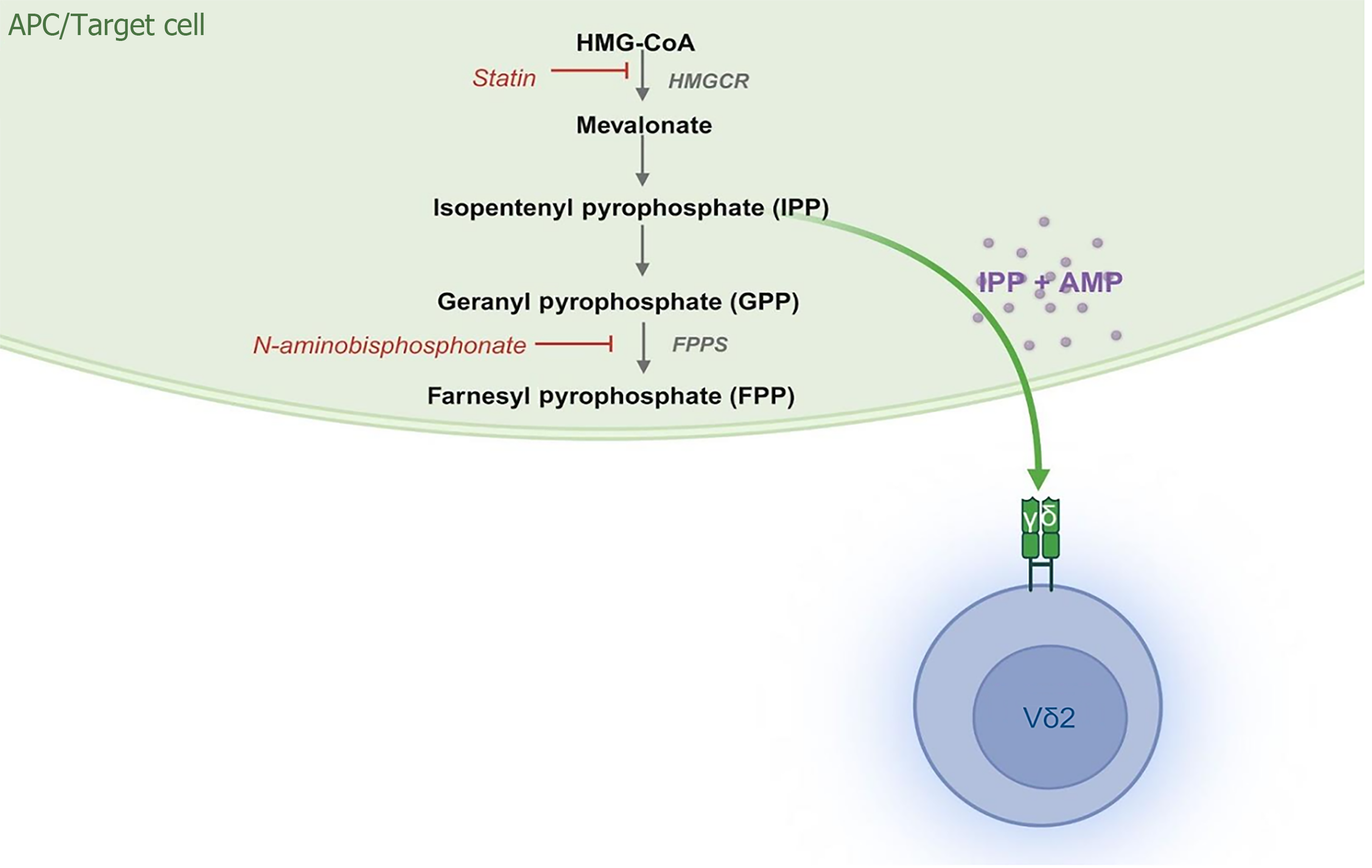Copyright
©The Author(s) 2025.
World J Clin Oncol. Oct 24, 2025; 16(10): 110466
Published online Oct 24, 2025. doi: 10.5306/wjco.v16.i10.110466
Published online Oct 24, 2025. doi: 10.5306/wjco.v16.i10.110466
Figure 1 Mevalonate pathway.
N-aminobisphosphonates, including zoledronate, inhibit the mevalonate pathway by blocking farnesyl pyrophosphate synthase. This results in intracellular accumulation of isopentenyl pyrophosphate and its metabolites, which are recognized by Vδ2 T cells. APC: Antigen-presenting cell; FFPS: Farnesyl pyrophosphate synthase; HMG-CoA: 3-hydroxy-3-methyl-glutaryl-coenzyme A; HMGCR: 3-hydroxy-3-methyl-glutaryl-coenzyme A reductase; IPP: Isopentenyl pyrophosphate.
- Citation: Lehman N, Zarobkiewicz M. Expansion strategies for Vδ2 γδT cells in cancer immunotherapy: Activation, cytokines, and culture conditions. World J Clin Oncol 2025; 16(10): 110466
- URL: https://www.wjgnet.com/2218-4333/full/v16/i10/110466.htm
- DOI: https://dx.doi.org/10.5306/wjco.v16.i10.110466













